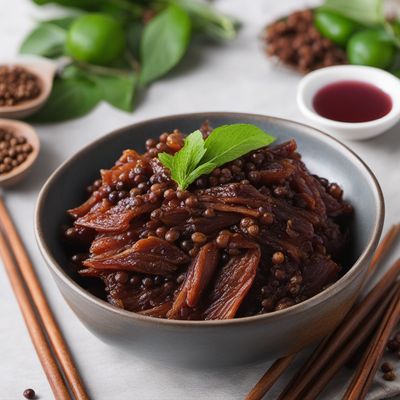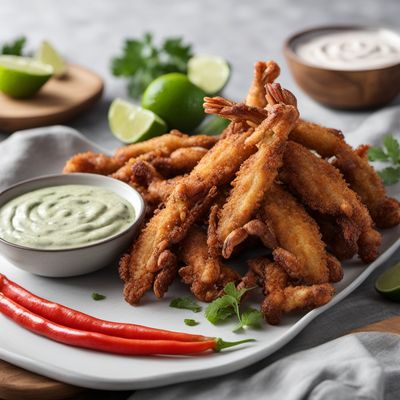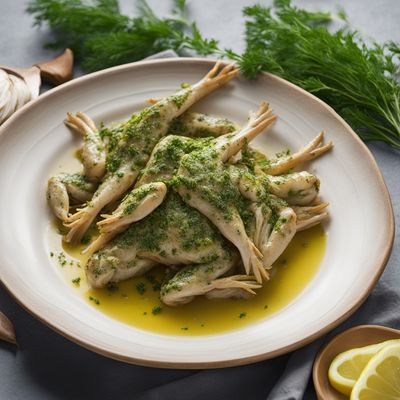
Ingredient
Frogs meat
Leap into Flavor: Exploring the Delights of Frogs Meat
Frogs meat is lean and tender, with a delicate texture that is often compared to chicken or fish. It has a mild, slightly earthy flavor that can be enhanced with various seasonings and cooking techniques. The meat is typically pale white or light pink in color, and its small size makes it ideal for bite-sized dishes or as an ingredient in stews and soups.
Origins and history
Frogs meat has been consumed for centuries in many cultures around the world. It is particularly popular in French and Chinese cuisines. In France, frog legs are considered a delicacy and are often prepared in a classic dish called "Cuisses de Grenouille." In Chinese cuisine, frogs are commonly used in stir-fries and hot pot dishes. Historically, frogs meat was also consumed by ancient Romans and Greeks.
Nutritional information
Frogs meat is low in fat and calories, making it a healthy protein option. It is also a good source of vitamins and minerals, including potassium, vitamin A, and vitamin B12.
Allergens
Frogs meat may cause allergic reactions in individuals with shellfish allergies, as frogs are amphibians and share some allergenic proteins with shellfish.
How to select
When selecting frogs meat, look for fresh, firm, and plump legs. Avoid any signs of discoloration, sliminess, or unpleasant odor. If purchasing frozen frogs legs, ensure they are properly sealed and free from ice crystals.
Storage recommendations
Fresh frogs meat should be consumed as soon as possible to maintain its freshness. If necessary, it can be stored in the refrigerator for up to 2 days. Frozen frogs legs should be kept in airtight packaging and can be stored in the freezer for up to 3 months.
How to produce
Frogs meat is typically harvested from frogs that are raised specifically for consumption. It requires specialized knowledge and equipment to raise frogs for meat production, making it more suitable for professional farmers rather than amateurs.
Preparation tips
Before cooking frogs meat, it is important to thoroughly clean and rinse the legs. They can be marinated or seasoned to enhance their flavor. Frogs legs are commonly pan-fried, sautéed, or deep-fried to achieve a crispy texture. They can also be used in soups, stews, or curries for added flavor and protein.
Culinary uses
Frogs meat is commonly used in French and Chinese cuisines. In French cuisine, it is often prepared by pan-frying or sautéing the legs and serving them with garlic butter or a creamy sauce. In Chinese cuisine, frogs legs are commonly used in stir-fries, hot pot dishes, or in soups. They can also be used as an ingredient in risottos or pasta dishes for a unique twist.
Availability
Frogs meat is commonly available in regions where frog farming or hunting is practiced, such as France, China, Southeast Asia, and parts of the United States.
More ingredients from this category
Recipes using Frogs meat

Crispy Frog Legs with Turkish Spices
Turkish Delight: Crispy Frog Legs with a Flavorful Twist

Crispy Frog Legs with Herb Butter
Savory Delight: Crispy Herb Butter Frog Legs

Crispy Fried Frog Legs
Delightful Italian-style Frog Legs

Frogs' Legs in Garlic Sauce
Savory Delight: Garlic-infused Frogs' Legs

Adobong Sawâ with a Twist
Savory and Tangy Frog Adobo

Crispy Frog Legs with Zesty Lime Dip
Zesty Lime Delight: Crispy Frog Legs Recipe

Frogs Legs with Garlic and Herb Butter
Savory Delight: Garlic and Herb Butter Frogs Legs

Adobong Palakâ with a Twist
Savory Frog Legs Adobo: A Filipino Delicacy with a Twist
